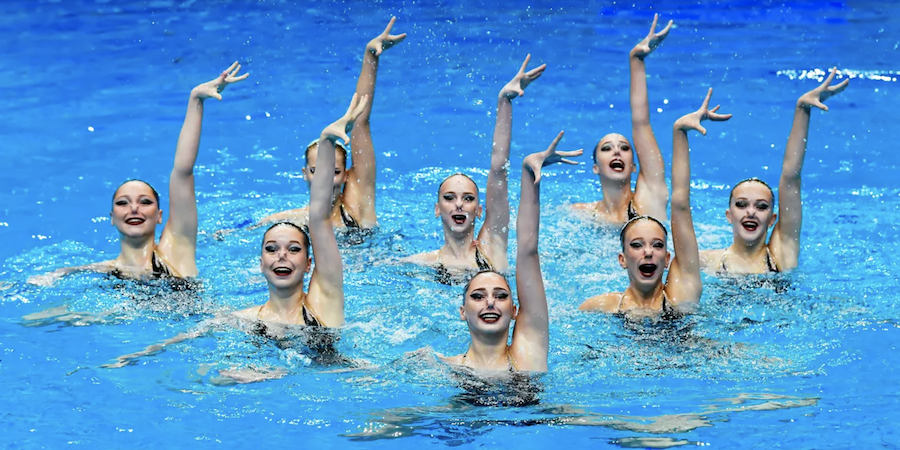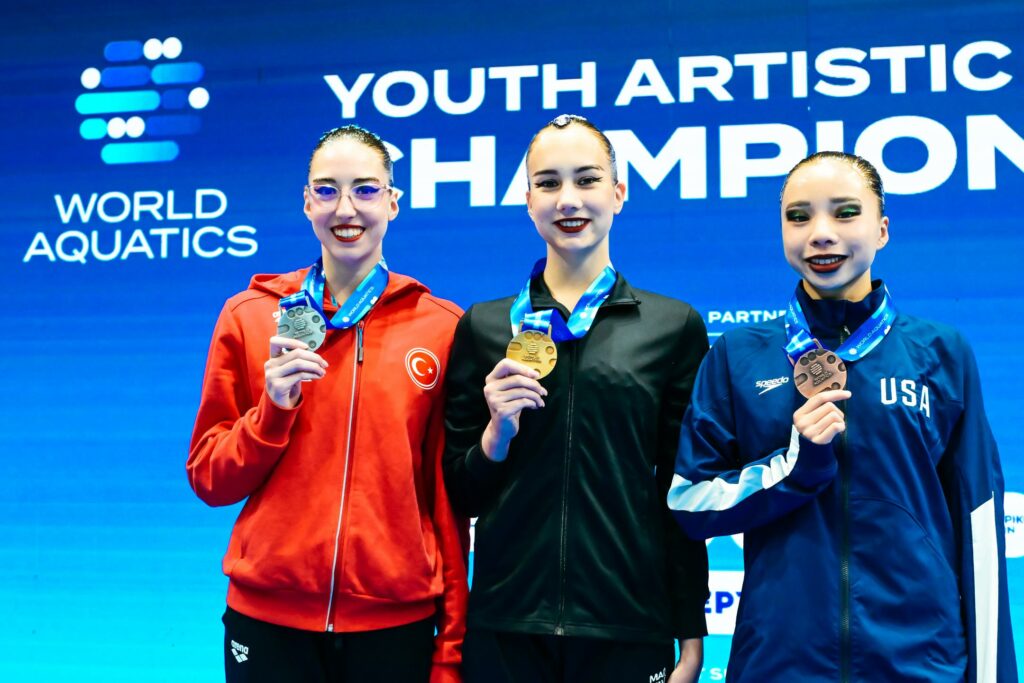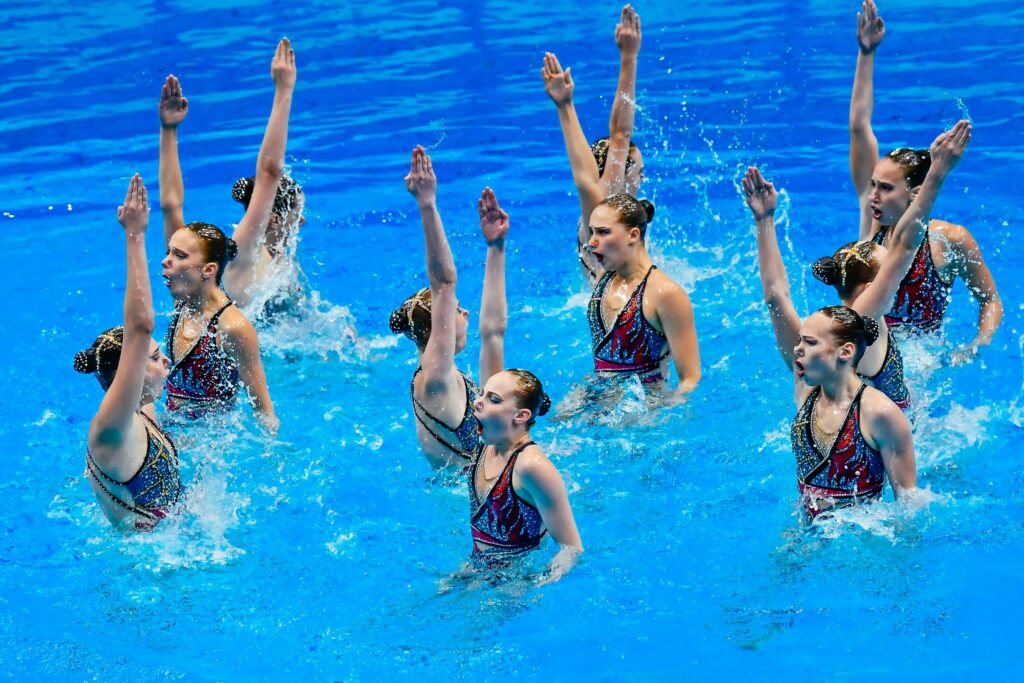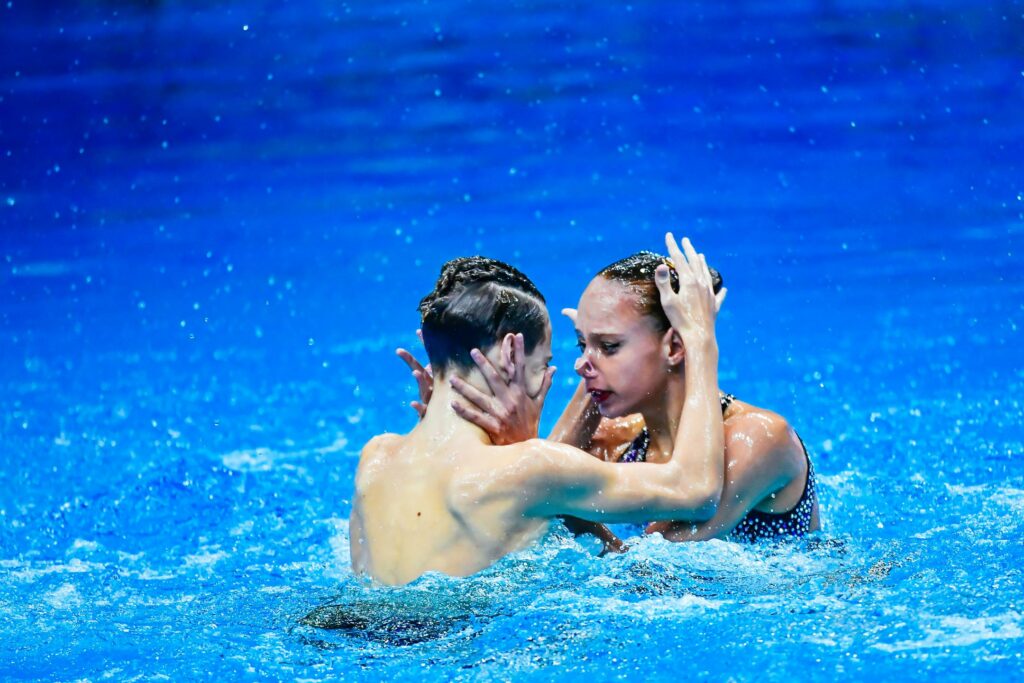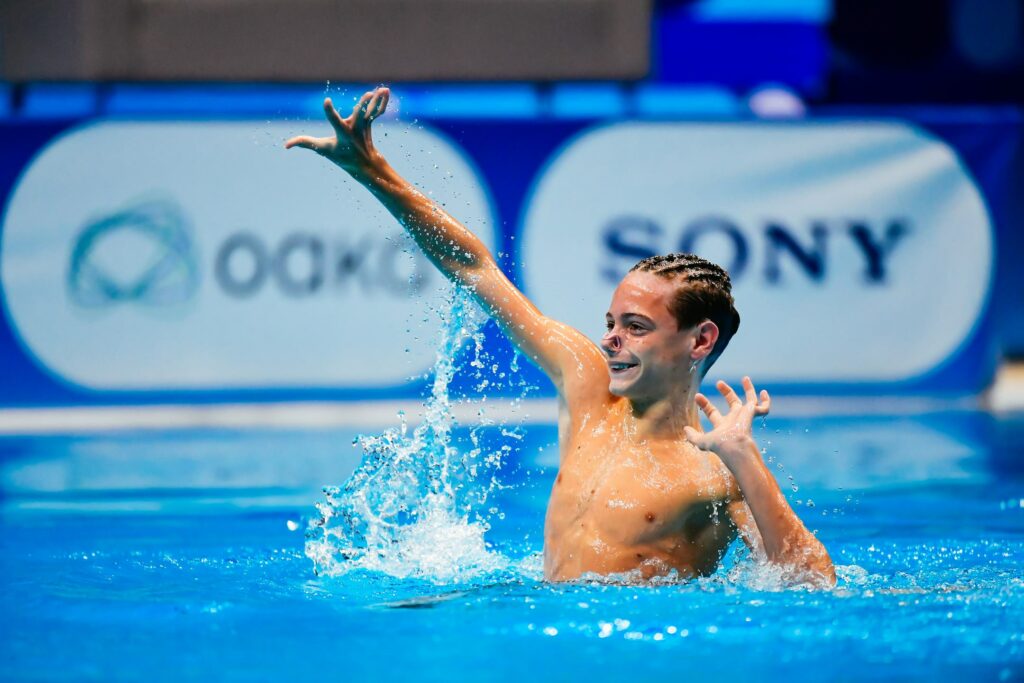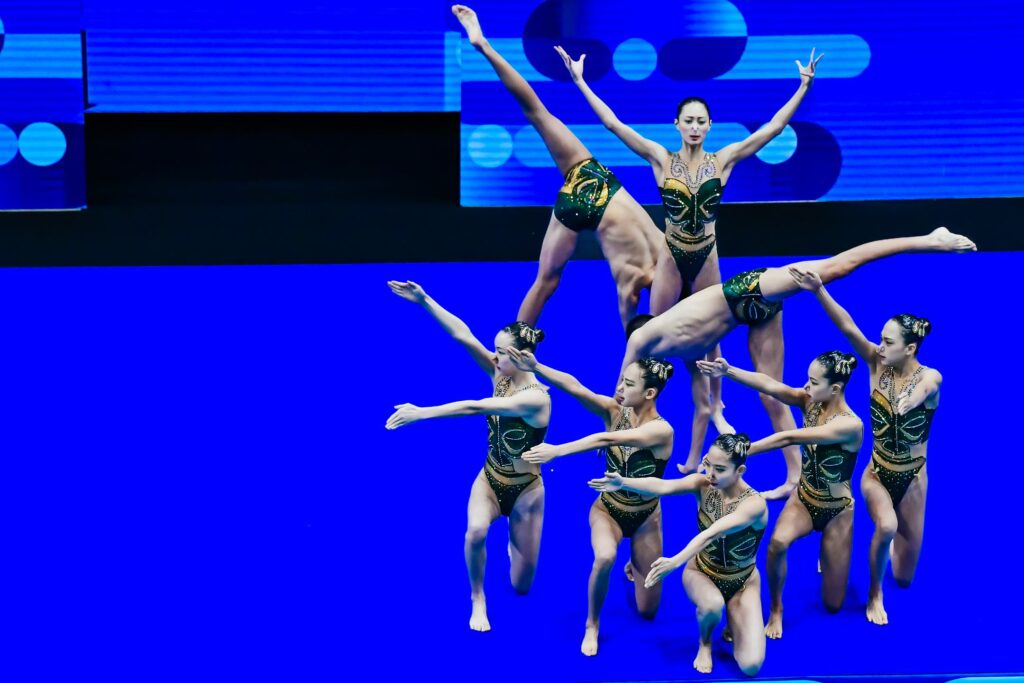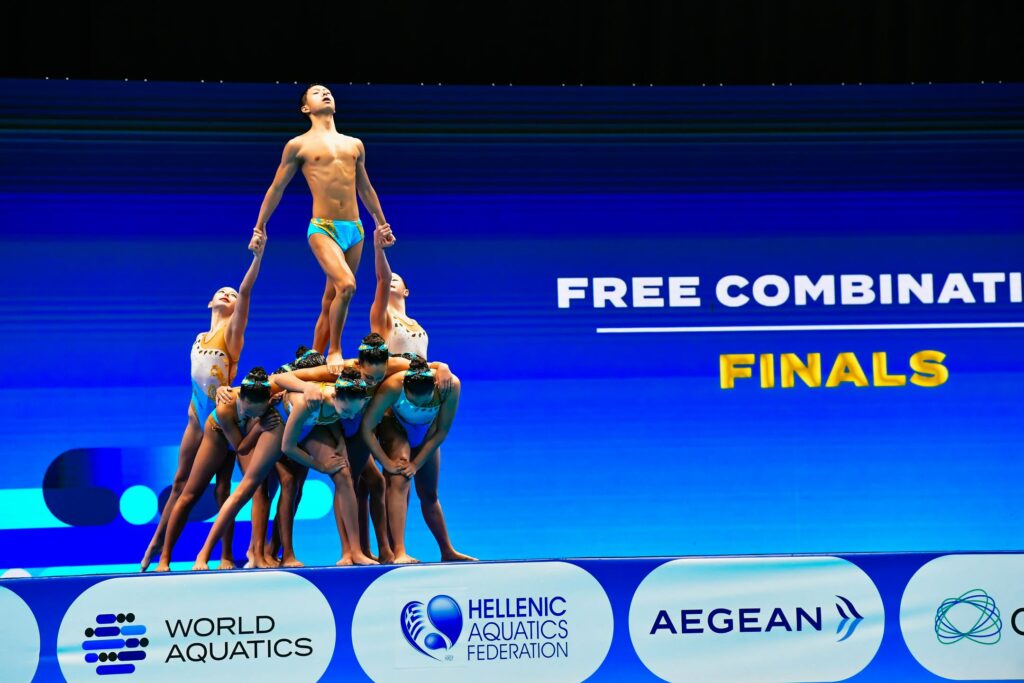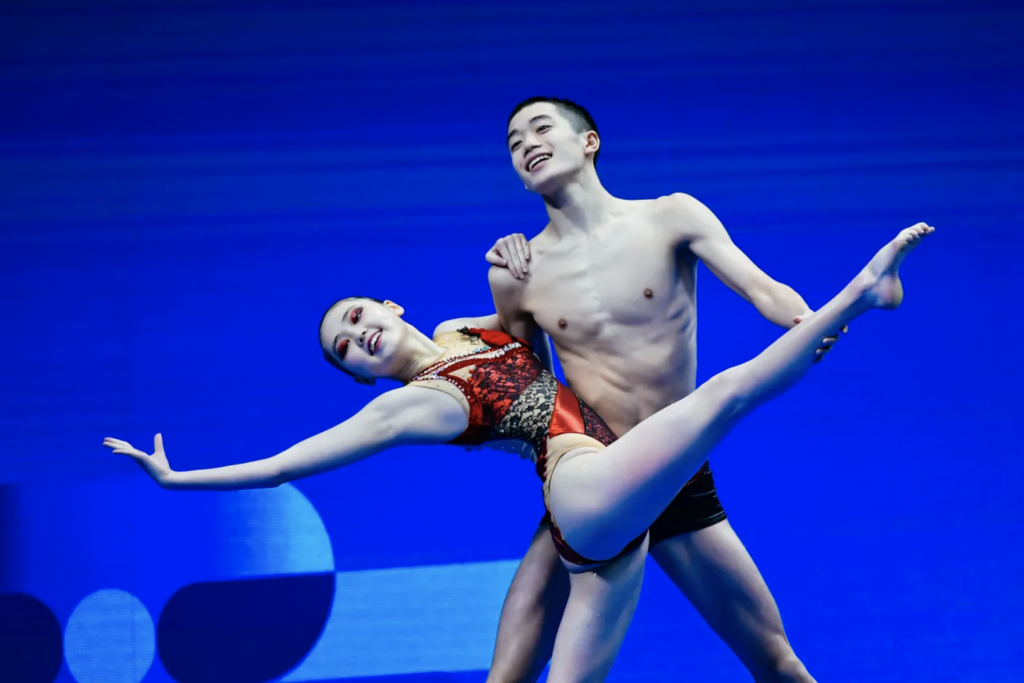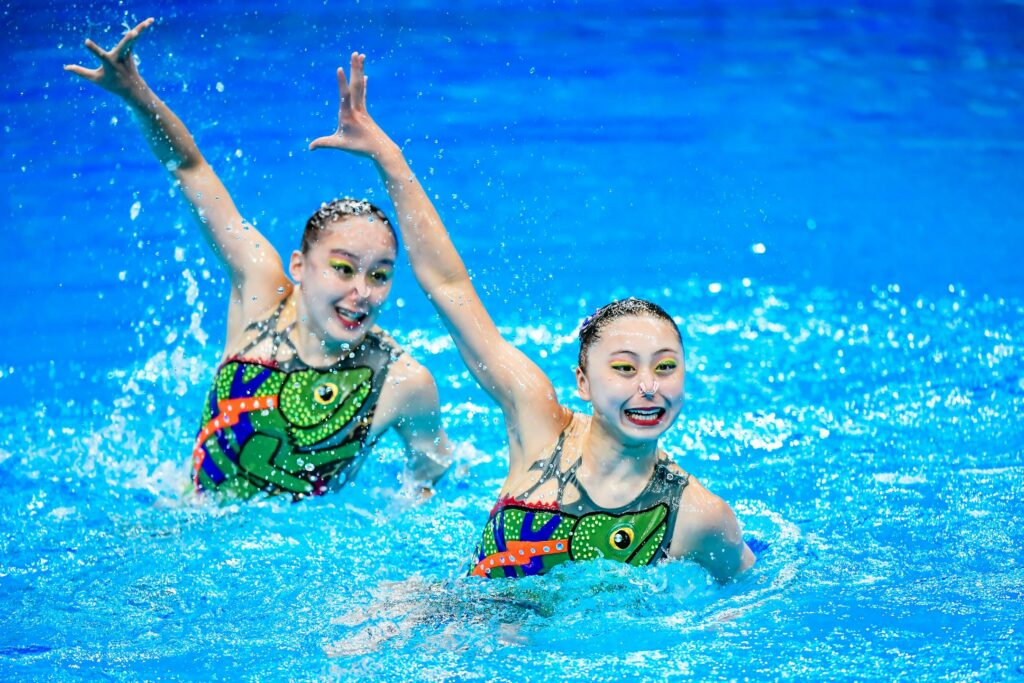The fourth edition of the World Youth Artistic Swimming Championships unfolded this week in Athens, Greece, a city that in recent years has truly established itself as a home for youth and junior competitions at both European and World level.
A record 38 countries were represented, bringing together more than 320 athletes aged between 13 and 16. It was an exciting and historic week in the pool, yet ultimately only two delegations reached the very top of the podium: Neutral Athletes B and France.
Much like at the recent World Championships in Singapore, artistic swimmers from Belarus and Russia returned to this age group under the designations Neutral Athletes A and Neutral Athletes B, respectively. For the latter, it was a return that could only be described as emphatic.
All of the NAB swimmers were making their international debuts, yet they reigned supreme across almost every event they contested, claiming five gold medals and sweeping the podium in the figures. They were consistently miles ahead of their competition, often by double-digit margins, with the smallest gap of ten points coming only in a final where they suffered a basemark.
Aleksandra Pishchikova opened the gold rush with her “Snakes” routine in the women’s solo, scoring 391.5284, before joining forces with Varvara Barabashova to dominate the duet with their powerful “Valkyries” performance to earn 338.0115.
The team routine, to the theme of “Challenge Yourself,” was a masterclass in execution and difficulty, achieving 441.6593, nearly 36 points clear of silver. Their “Shaolin Way” free combination was equally intricate and commanding despite a completely failed acrobatic movement that never even materialized. They still prevailed with 337.9312, such was their strength elsewhere.
The only likely disappointment for the delegation came in the mixed duet. Mariia Koloskova and Dmitrii Kozachuk, with their “Adam and Eve” routine, had already endured a basemark in the preliminary but had been pushed up to third thanks to strong figure results. Unfortunately, they suffered another, more costly, basemark in the final as one swimmer forgot part of the last hybrid, a mistake impossible to recover from in the current scoring system. Heavy synchronization errors compounded the damage, and they ultimately dropped out of medal contention.
Even as Neutral Athletes B commanded attention with their unmatched strength, execution, choreography and technique, France carved out its own historic week. The nation enjoyed its most successful World Championships ever, across any age group, winning two gold medals and two bronzes.
14-year-old Macéo Vanhée-Dedieu was at the heart of this triumph, contributing to three medals for his debut on the World Championships stage. Already European Youth Champion in the men’s solo, he confirmed his extraordinary talent and potential by becoming World Champion.
Swimming to the song “Warriors” by Imagine Dragons, he combined expressive artistry with crisp technique and impressive execution for a score of 376.7072, outclassing the rest of the field by nearly 30 points. He also was the top French athlete in the figures competition, ranking 17th.
Vanhée-Dedieu then paired with Carla Pusta for a fiery Paso Doble in the mixed duet. The two have been swimming together for several years already, and their chemistry both in and out of the water shone through as they edged China for the gold by just over a point. Their opening acro even earned two perfect 10s.
For Pusta, the week was especially remarkable as she was the sole artistic swimmer to be entered in all five possible events, collecting three medals in the process. With their level of talent, drive and compatibility, both Vanhée-Dedieu and Pusta look destined for an exciting future, and they are certainly athletes to keep an eye on in the years ahead.
France’s two bronze medals came in duet and team. The duet of Carla Pusta and Gabrielle Bassou, using music from the movie “Avatar,” had only ranked seventh after preliminaries, but capitalized on basemarks from other contenders including Spain, China and the United States to rise all the way to third, clinching the bronze by less than half a point.
In the team event, the French battled fiercely with the USA and China for the remaining medals behind an untouchable NAB. Just over five points separated all three after the preliminary round, but in the end, France managed to stay ahead of China and secure bronze with its “Jungle” routine, and less than a point behind the USA in silver — also with a dynamic “Jungle” choreography.
Remarkably, this bronze marked France’s first-ever World Championships medal in the team event, across any age group, and came alongside another historic first in the mixed duet, which was however added to the international stage only 10 years ago.
The United States and China each leave Athens with three medals. For the Americans, that meant silver in men’s solo and team, along with bronze in women’s solo thanks to 15-year-old Jaclyn Zhuge. Zhuge, who notably won the last senior national team trials, looks poised to make her senior international debut soon, and her “Evil Spirit” routine here only confirmed her promise.
China secured silver in mixed duet, and bronze in the men’s solo and free combination. Overall, the nation stood out with its willingness to experiment musically and step out of its comfort zone. The mixed duet of Chen Xiuping and Xu Keyi surprised by swimming to Rammstein’s “Sehnsucht,” an unusual pick but one that they carried while still keeping a distinctly Chinese style.
In the men’s solo, Chen went even further with more heavy metal music, adding a sharp and unexpected edge to his performance, while the duet also broke new ground by swimming to a song by Uyghur musician Erkin Abdulla that blends contemporary music, Uyghur folk, and flamenco.
Beyond their musical risks, the team’s roster also reflected a promising future for China, with the inclusion of three young men—twin brothers Chen Xiuan and Chen Xiuping in the team routine, and Chen Xiuan alongside Lei Zichen in the free combination — highlighting the nation’s continued development on the men’s side.
Elsewhere, history was also made by Selin Hürmeric of Türkiye, who captured the country’s first-ever artistic swimming medal at a World Championships by winning silver in women’s solo with her “Rise of the Phoenix” routine.
Already European Youth Champion in figures, she also stood out in Athens by finishing sixth in figures, the only non-NAB athlete to break into the top 10. Her consistency across both events confirmed her rising status, following on from her double gold at the COMEN Cup earlier this summer.
Japan added a silver in duet and a bronze in mixed duet, where Aitaka Heizo and Atsumi Yuiko rebounded from a basemark in the preliminary to deliver a much stronger flamenco-inspired swim in the final.
Spain returned to the free combination podium with silver, presenting again their modernized version of its iconic “Stairway to Heaven” routine from 2009. The Spaniards had indeed already used this routine back in the 2023 World Youth Championships, where they had won bronze.
Egypt impressed with clean, sharp and detail-oriented routines, particularly its “Aliens” team program which included clever hand choreography mimicking alien fingers. The free combination, set to the theme of “Magical Garden”, also showcased thoughtful choreography, interesting transitions and strong execution.
Among smaller nations, several performances stood out for their promise and significance. Estonia achieved an impressive 14th place in the routine rankings of the team preliminaries, as well as debuts in the men’s solo and mixed duet. Ecuador also made a memorable first impression by reaching the mixed duet final in its very first appearance on the world stage, although the pair unfortunately withdrew before competing.
The mixed duet event itself enjoyed record participation, with 16 nations entered, several of them for the first time or returning after long absences. This remarkable growth, alongside the continued evolution of the men’s solo, shows how far the sport has come in embracing diversity of participation and style.
Ultimately, these championships were a pleasure to watch. Across the board, routines were impressive, imaginative, and carefully constructed, with effort clearly put into the content, transitions, pacing, and details. Choreographies and hybrids felt fresh rather than repetitive, and the influence of a new, younger wave of coaches was evident, bringing energy, curiosity, and a willingness to bring new things to the water.
The World Youth Championships left no doubt that the future of artistic swimming is bright, with young athletes and coaches ready to challenge expectations and redefine what the sport can be.
ARTICLE BY CHRISTINA MARMET
All photos: Dimitris Mantzouranis / World Aquatics
If you’ve enjoyed our coverage, please consider donating to Inside Synchro! Any amount helps us run the site and travel costs to cover meets during the season.

